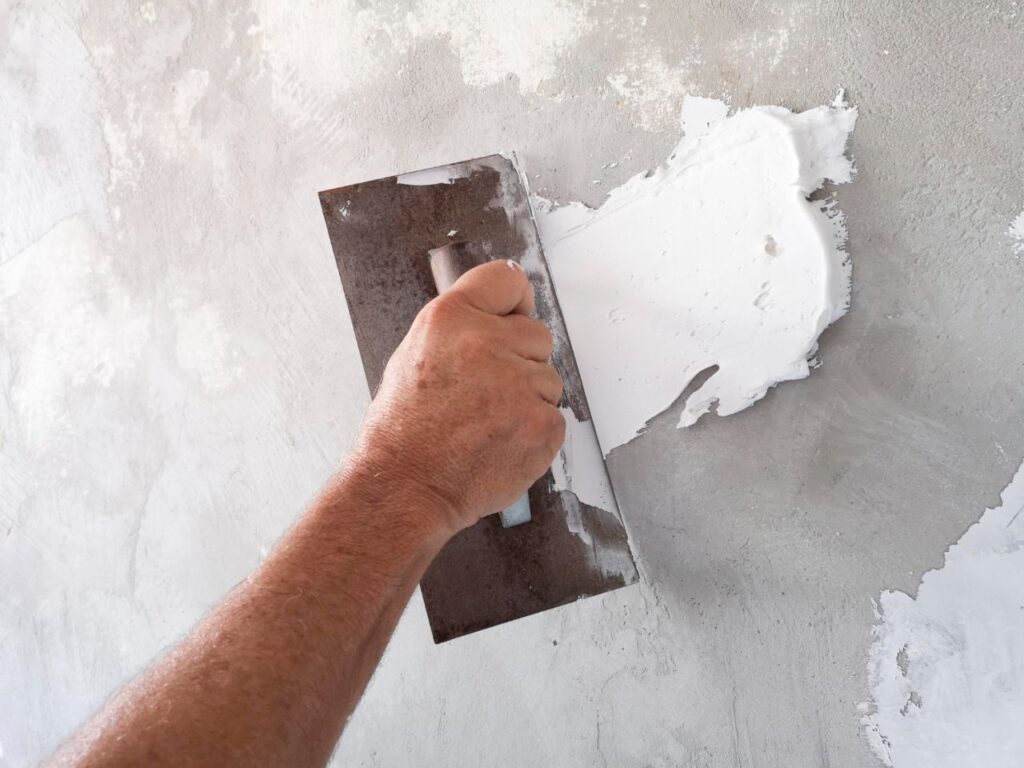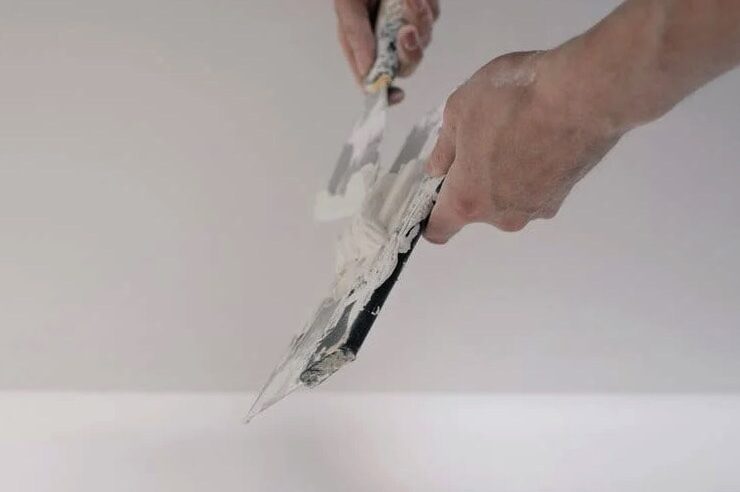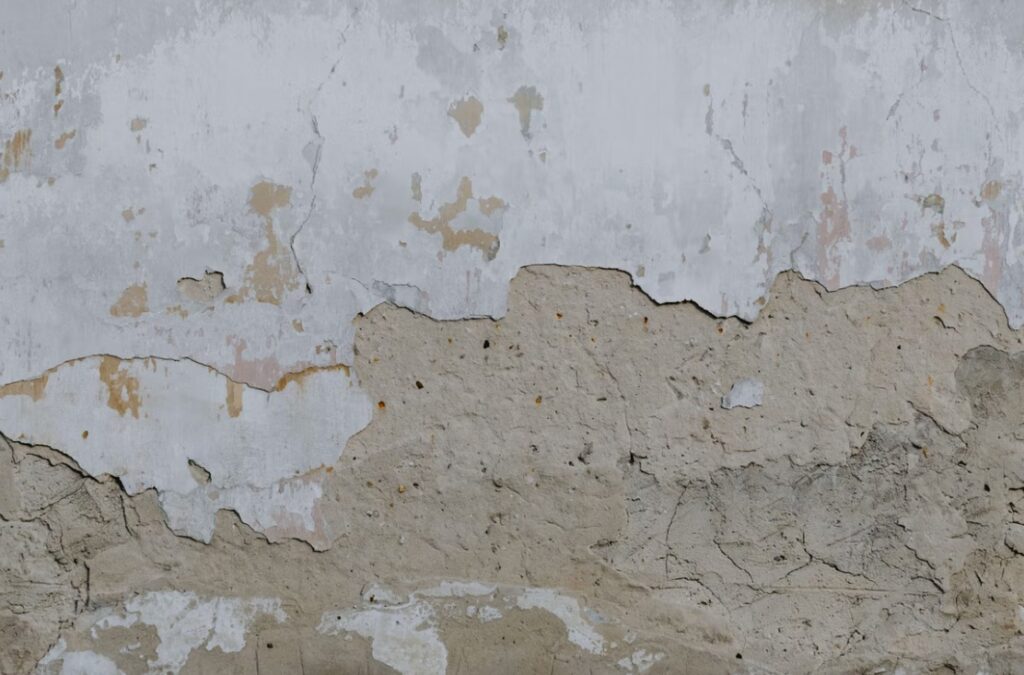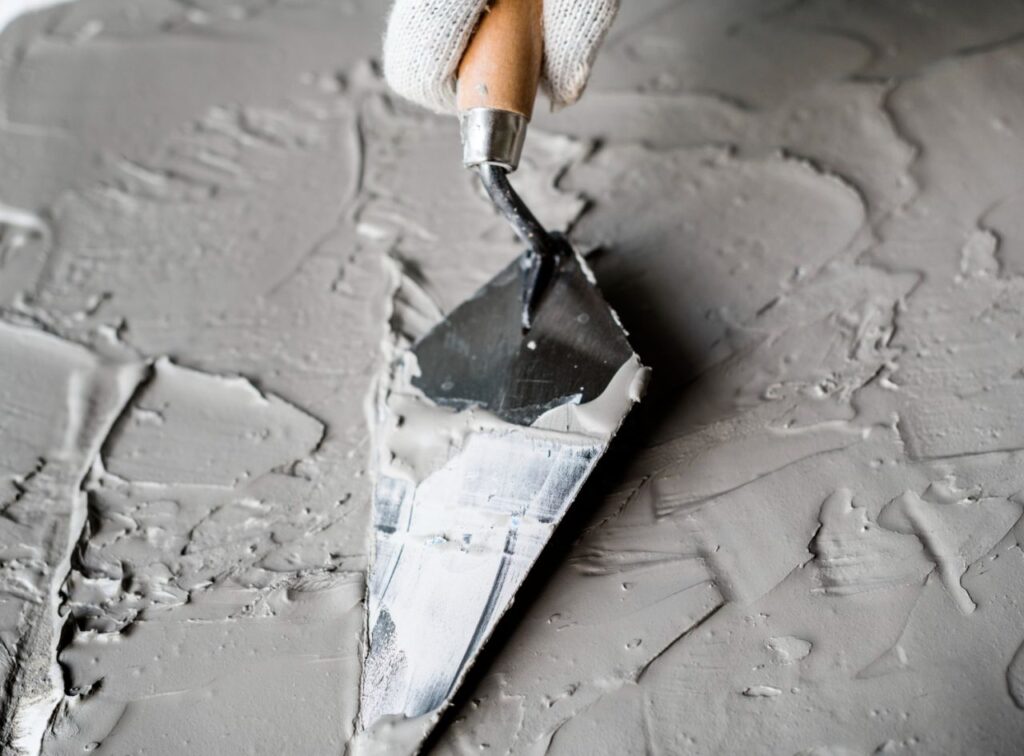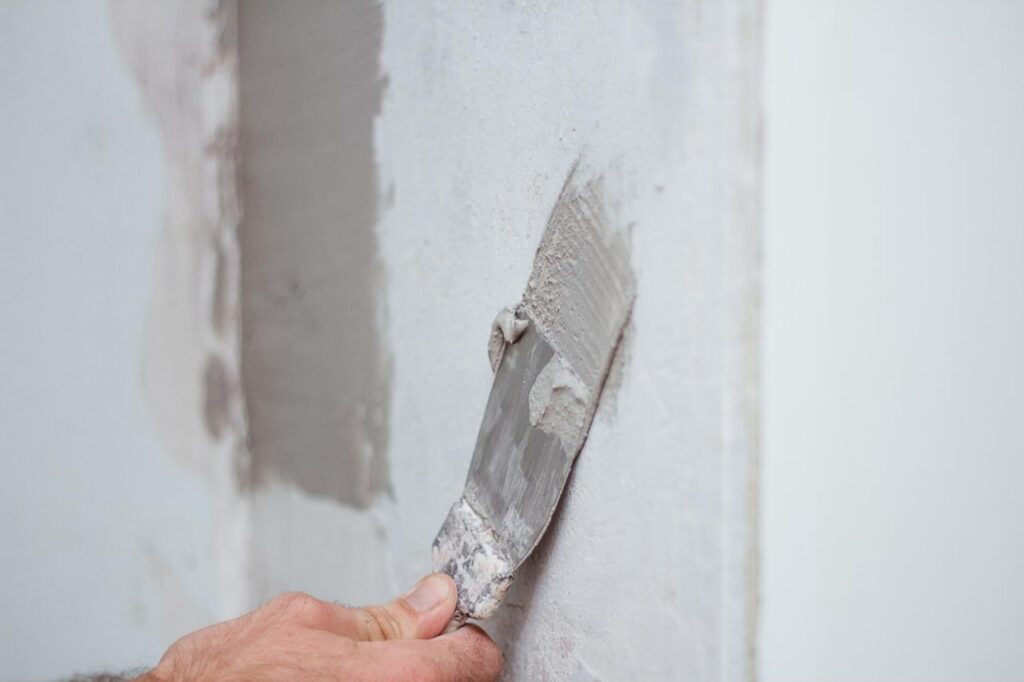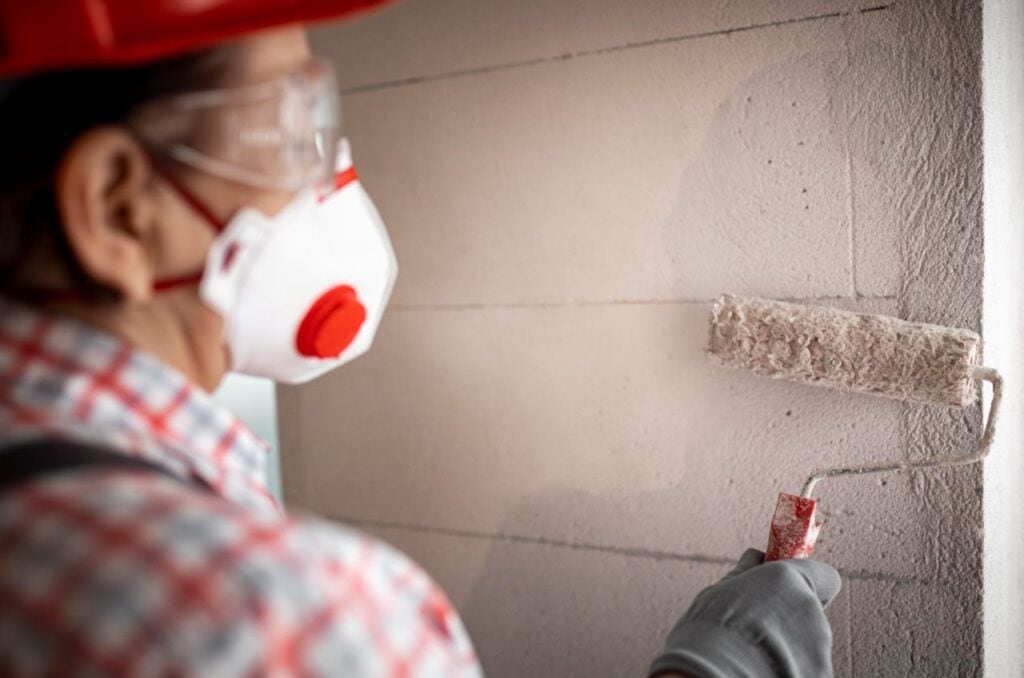If you know the answer to the question "Can you paint directly onto plasterboard?" then you won't need a plasterer and can perform the work yourself. Skimming walls first is preferable in many cases, but taking this path will save you money and allow you to do the project more quickly.
Plasterboard is similar to painting a wall in the conventional manner due to the paper covering, but proper preparation is still necessary. While painting, you'll need a paintbrush, roller, and, of course, paint, whether you're working with lining paper, anaglypta wallpaper, or bare plaster.
We explain when and where you can paint plasterboard, as well as the proper preparation and painting techniques, and when skimming is an absolute need.
Can you paint directly on the plasterboard?
Plasterboard can be painted on without priming first. However, there are certain factors to consider before doing so.
The plasterboard must first be thoroughly cleaned, dried, and free of dust and debris. Before painting, the plasterboard must be prepared by having any dust or debris cleaned from the surface.
Second, it's recommended to use a primer before painting. Once the paint is applied to the plasterboard, the primer aids in its adhesion to the material, leading to a better final product.
Third, select the best paint for the task at hand. The smooth, even finish that emulsion paint provides makes it a popular choice for painting plasterboard walls and ceilings. However, you should think about using specialised moisture-resistant paint if you are painting in a high-moisture area like a bathroom or kitchen.
As a last step, remember to start light and gradually add more layers as you paint. Drips are avoided, and the coating is applied evenly and smoothly, thanks to this method.
To sum up, you can paint straight on plasterboard, but you need to make sure the surface is dry, clean, and primed first. Using the proper paint and applying it in thin coats can also contribute to a high-quality finish.
How to prepare plasterboard to be painted?
Plasterboard needs to be primed and sanded before it can be painted smoothly and evenly. Following are the measures to take before painting on plasterboard:
- Lightly sand the plasterboard's surface using a piece of sandpaper. Any imperfections in the final coating's smoothness will be smoothed out by this process.
- Wipe the plasterboard down with a moist towel to get rid of any dust or dirt that has accumulated. Don't touch the area until it's completely dry.
- Priming the plasterboard prior to painting improves paint adhesion and creates a more uniform appearance. Apply the primer with a paintbrush or roller, then wait the amount of time specified by the manufacturer.
- Patch up the holes and cracks in the drywall with joint compound. Joint compound should be applied using a putty knife and then smoothed out. If you're using joint compound, wait until it's totally dried before sanding it smooth.
- Once the joint compound is dry, sand the surface again to make it as smooth as possible. It will make the surface uniform and primed for painting.
- Remove any remaining dust or dirt from the surface of the plasterboard using a moist cloth.
- Lastly, using a paintbrush or roller, apply the paint to the plasterboard. Use light, even strokes of paint and wait for each layer to dry before proceeding.
If you follow these instructions, you'll be able to paint your plasterboard to a smooth and even finish.
What is the best way to paint plasterboard?
Plasterboard walls are inexpensive and easy to put up, among their many other advantages.
Plasterboard is a versatile building material that can also provide good soundproofing and resistance to moisture and mould, depending on the type.
This article will answer your question of whether or not you can apply paint directly on a plasterboard wall.
Quite simply, yes, you can paint directly onto a plasterboard surface.
If you want your wall to last and look amazing for years to come, there are a few things you need to do. Well, so let's begin.
First, apply a mist coat
A mist coat is the first step you should take when painting directly onto the plasterboard. An emulsion coat that has been diluted into a mist. The ideal ratio for a mist coat is normally 1 part water to 2 parts paint, however, this will vary depending on the paint you're using.
In addition to sealing the plasterboard, this mist coat also creates a fantastic groundwork for subsequent coats of paint. You can use conventional paint emulsions after the mist coat has been applied. The best results will be achieved by rolling the product onto large, flat surfaces.
Apply Joint Filler
It is essential to have a flat surface when painting directly onto the plasterboard. Painting directly onto the plasterboard eliminates the need for a skim coat, but you still need to fill any defects and cracks.
The junction between sheets of plasterboard is one of the trickiest parts to smooth out. In order to get a seamless appearance at the junction, it may be required to sand it down and add more filler.
Apply the Paint
Plasterboard is ready for painting when you've finished sanding, filling, and applying a mist coat. It's suggested that you give the wall two or three coats of paint until you're happy with the final look.
The best paint to use will vary from one circumstance to the next. Because of the humidity in a bathroom, for instance, watertight paint is recommended. Fire-resistant paint could be recommended in several scenarios.
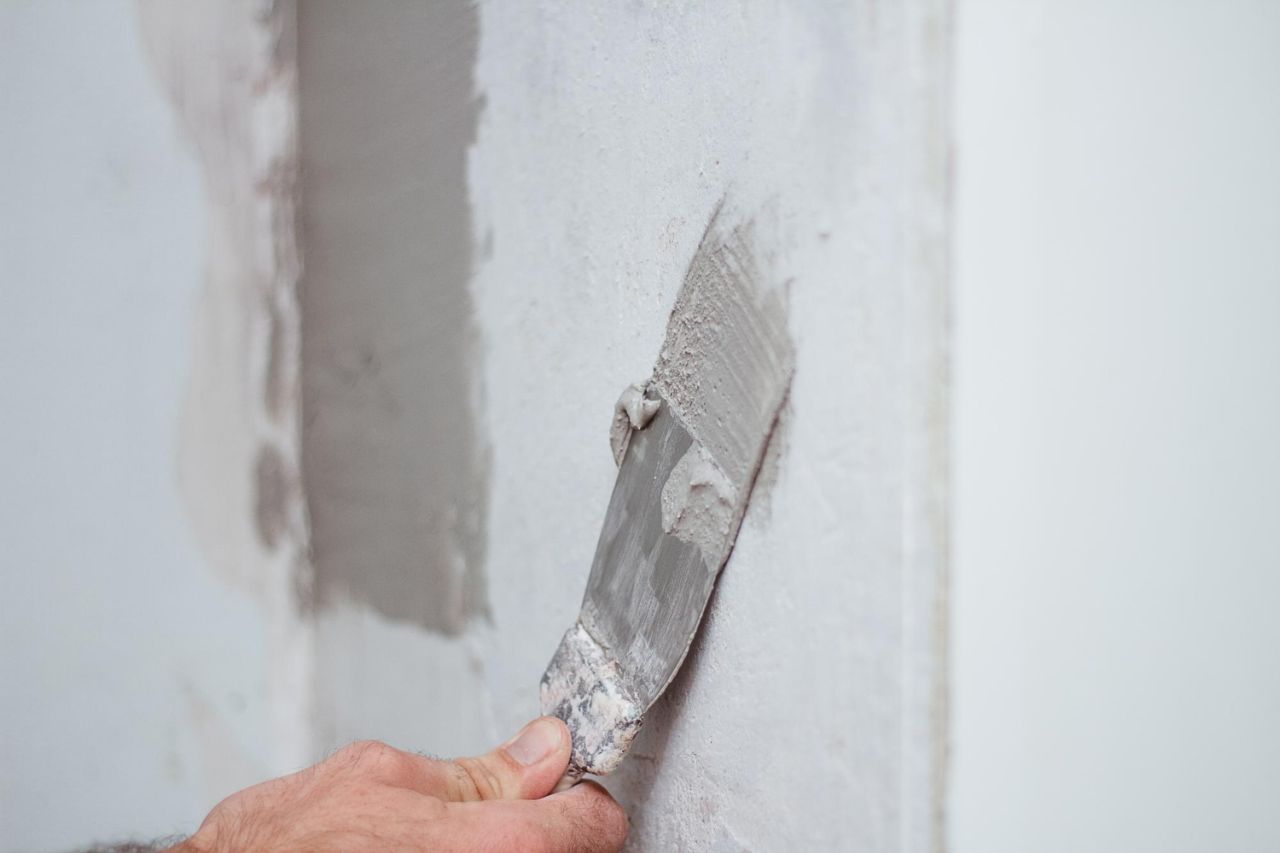
Always refer to the manufacturer's guidelines while applying these paints.
Applying paint to plasterboard is fairly similar to painting a room.
- First, once you've finished the preparatory work, grab a brush and brush away the dust, then wipe it off with a damp towel. Now, get a vacuum and clear the area so you may paint without worrying about splatters.
- Start by painting the edges (corners, ceiling/wall intersections, and skirting boards) with a two- or three-inch paint brush to establish a clean line.
- Third, load up a 9-inch roller and a roller tray with paint, and roll it onto the walls. If you need to get to a higher shelf or clean a higher window quickly, invest in an extension pole. To apply paint, begin at the top in one corner and roll in a V or W pattern.
- Let the first coat dry completely, which won't take long if you used an emulsion. Apply another coat and let it dry. A third coat is usually necessary to get a solid colour. Once you're done, just let it dry.
Is it necessary to skim the plasterboard before painting?
Actually, both yes and no. This will depend on the location of the plasterboard installation and the desired final appearance.
Basic plasterboard is not recommended for wet areas such as kitchens and bathrooms, but it is suitable for dry areas such as hallways and living rooms, and it is an excellent choice for inexperienced plasterers because it can be painted directly. Nonetheless, it is recommended that all plasterboard be skimmed.
Skimming a plasterboard wall creates a smooth, resilient, longer-lasting finish that accepts a variety of treatments. You can tile over freshly plastered plasterboard in the bathroom or kitchen. Plaster can be covered with wallpaper or emulsion in every other room of the house.
Is it necessary to paint plasterboard?
Plasterboard painting is crucial for a number of reasons:
Protection
Given its porous nature, plasterboard is quickly marred by water, scratches, and general wear and tear. Painting the plasterboard will prevent it from deteriorating and extend its useful life.
Appearance
Plasterboard can be made to look better and more finished if it is painted. Walls can be painted or covered in a variety of materials to reflect the individual's taste and personality.
Cleanliness
Plasterboard is notorious for being a pain to keep clean and is highly stain- and dirt-absorbent. Painting the plasterboard creates a surface that is easier to clean and maintain, which aids in keeping the home looking neat and tidy.
Resale value
Well-painted plasterboard is an easy way to boost your home's selling value if you ever decide to sell. Potential buyers will be more interested in purchasing your home if it has a clean, well-kept inside.
Plasterboard is a common building material, and painting it is a crucial step in completing a wall and making it more durable. You can make a finish that will last for years and look great with only a little bit of work and good paint.
Can You Paint Straight Onto Plasterboard Without Skimming?
Plasterboard is a common and adaptable material for interior walls and ceilings.
Skimming and painting are two of the many options for finishing plasterboard. A smooth finish on plasterboard is achieved by skimming, which entails applying a thin coat of plaster to the surface.
People often question if they may skip the skim coating and paint directly onto the plasterboard.
While it is possible to skip the skim coating step and directly apply paint to plasterboard, this isn't generally the recommended method.
In order to make a uniform and smooth surface for painting, skimming plasterboard is often done.
Plasterboard with lumps, ridges, or unevenness on its surface might not look its best after painting if the surface isn't first smoothed out with skim coating.
Uneven paint coverage and colour shifts can also occur because plasterboard absorbency varies. Skimming the plasterboard smoothes out the bumps and makes a consistent surface for painting.
The paint you intend to use is still another consideration. Emulsion and latex paints, in particular, are made to stick well to plasterboard and thus eliminate the need for a skim coat.
A smoother surface may be necessary for the appropriate adhesion of some paints, such as oil-based paints or high-gloss finishes.
To prevent the paint from peeling away from the plasterboard, skimming may be required.
It is also recommended that the plasterboard be skimmed prior to being painted a dark colour. This is because moisture absorption by plasterboard makes painting it difficult, if not impossible.
Sealing the surface and providing a more uniform foundation for the paint to adhere to are two benefits of skim coating.
Thinking about how long the painted surface will last is crucial. Painting directly onto plasterboard can lead to a finish that easily chips, peels, and cracks over time.
This is especially so in high-traffic areas or locations where there is a lot of wear and tear, like hallways or rooms used by youngsters.
For a longer-lasting and more durable paint job, skim the plasterboard first.
While it is possible to skip the skim coating step and directly apply paint to the plasterboard, this isn't generally the recommended method. Plasterboard can be skimmed to make a more uniform surface for painting, which in turn improves paint adhesion and longevity.
Ultimately, the decision to skim or not to skim should be dependent on the type of paint being used, the desired finishing aesthetic, and the overall durability and longevity of the finished product.
Is it necessary to hire a professional to paint a plasterboard?
Plasterboard painting is a job that can be done on your own, but there are times when it's worth it to bring in the pros. It may be worthwhile to hire a professional painter if you have little to no experience with painting, are tackling a large or complex project, or both.
A professional painter will know exactly what to use, how to properly prepare the surface, and how to apply the paint so that it will last. They're also geared up with everything they need to do a good job of it.
However, if you're comfortable with your painting skills and have experience, you might be able to paint a plasterboard on your own. If you want a professional look, you need to take the time to properly prepare the surface, select the appropriate paint, and apply it evenly.
Your level of expertise and the difficulty of the task should determine whether or not you should hire a professional to paint a plasterboard. If you're not sure how to proceed, it's smart to acquire an estimate from a specialist.
Conclusion
Where and when to skim, how to properly prepare and paint plasterboard, and other painting-related questions answered. The surface must be spotless before painting: free of dust and moisture.
Painting tips include applying a primer first, picking the right paint for the job, and working from light to dark as you go. The last steps are priming and sanding so that the paint goes on evenly and smoothly.
Lightly sand the surface with a piece of sandpaper, wipe the plasterboard down with a moist towel, prime it with a paintbrush or roller, patch up holes and cracks with joint compound, sand the surface again to make it as smooth as possible, remove any remaining dust or dirt from the surface of the plasterboard using a moist cloth, apply the paint to the plasterboard in light, even strokes, and wait for each layer to dry.
The mist coat is used to protect the plasterboard and lay down a base for the subsequent paint layers. When painting directly onto plasterboard, it's important to make sure the surface is smooth and free of imperfections by filling any cracks or holes.
Plasterboard joints are notoriously difficult to smooth out, and typically require sanding, filling, and a mist coat. The best paint to use is conditional; typically two or three coats are recommended.
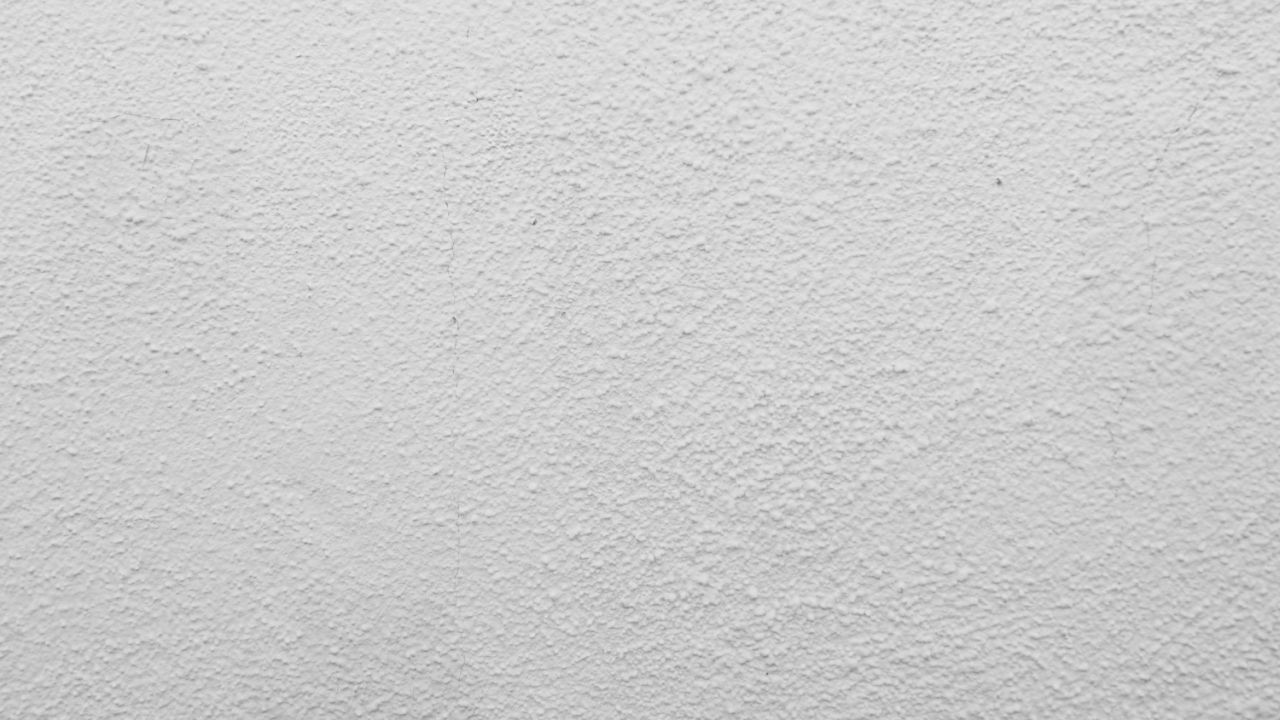
Always check the manufacturer's instructions.
Paint applied directly to the plasterboard is prone to chipping, peeling, and cracking over time.
Unless you have extensive painting experience or are taking on a particularly large or complex project, you probably don't need to hire a professional painter to paint your plasterboard walls.
A professional painter will have all of the necessary tools and knowledge to get the job done right. Getting a professional's opinion and estimate is a good idea if you are undecided about how to proceed.
Content Summary
- If you know the answer to the question "Can you paint directly onto plasterboard?"
- We explain when and where you can paint plasterboard, as well as the proper preparation and painting techniques, and when skimming is an absolute need.
- Can you paint directly on plasterboard?
- Plasterboard can be painted on without priming first.
- Third, select the best paint for the task at hand.
- To sum up, you can paint straight on plasterboard, but you need to make sure the surface is dry, clean, and primed first.
- Using the proper paint and applying it in thin coats can also contribute to a high-quality finish.
- Lightly sand the plasterboard's surface using a piece of sandpaper.
- Patch up the holes and cracks in the drywall with joint compound.
- Lastly, using a paint brush or roller, apply the paint to the plasterboard.
- What is the best way to paint plasterboard?
- Quite simply, yes, you can paint directly onto a plasterboard surface.
- In addition to sealing the plasterboard, this mist coat also creates a fantastic groundwork for subsequent coats of paint.
- You can use conventional paint emulsions after the mist coat has been applied.
- It is essential to have a flat surface when painting directly onto plasterboard.
- Plasterboard ready for painting when you've finished sanding, filling, and applying a mist coat.
- Applying paint to plasterboard is fairly similar to painting a room.
- Now, get a vacuum and clear the area so you may paint without worrying about splatters.
- Start by painting the edges (corners, ceiling/wall intersections, and skirting boards) with a two- or three-inch paint brush to establish a clean line.
- Third, load up a 9-inch roller and a roller tray with paint, and roll it onto the walls.
- Apply another coat and let it dry.
- This will depend on the location of the plasterboard installation and the desired final appearance.
- Nonetheless, it is recommended that all plasterboard be skimmed.
- Skimming a plasterboard wall creates a smooth, resilient, longer-lasting finish that accepts a variety of treatments.
- A well-painted plasterboard is an easy way to boost your home's selling value if you ever decide to sell.
- In order to make a uniform and smooth surface for painting, skimming plasterboard is often done.
- The paint you intend to use is still another consideration.
- Emulsion and latex paints, in particular, are made to stick well to plasterboard and thus eliminate the need for a skim coat.
- To prevent the paint from peeling away from the plasterboard, skimming may be required.
- It is also recommended that the plasterboard be skimmed prior to being painted a dark colour.
- Sealing the surface and providing a more uniform foundation for the paint to adhere to are two benefits of skim coating.
- Thinking about how long the painted surface will last is crucial.
- For a longer-lasting and more durable paint job, skim the plasterboard first.
- While it is possible to skip the skim coating step and directly apply paint to plasterboard, this isn't generally the recommended method.
- Is it necessary to hire a professional to paint a plasterboard?
- However, if you're comfortable with your painting skills and have experience, you might be able to paint a plasterboard on your own.
- If you want a professional look, you need to take the time to properly prepare the surface, select the appropriate paint, and apply it evenly.
- Your level of expertise and the difficulty of the task should determine whether or not you should hire a professional to paint a plasterboard.
Frequently Asked Questions About Plaster
Plaster is more expensive than gypsum. Cement and cement lime plaster are cheaper alternatives. The substance used is chlorine, which is highly toxic in its pure form.
White cement is not the same as plaster; it has a different consistency. The former, made of gypsum, is used to make casts for medical purposes (such as when repairing a fracture), while the latter is put on walls to make them shine.
Many people fear working with plaster because of its inherent dangers. Though it is not dangerous in the right hands, the substance is generally considered safe for everyday use. Anything embedded in the plaster runs the risk of being trapped and subjected to extreme heat.
Plaster is the best option for repairing gaps in plaster walls because its properties are more likely to match the wall material. Plaster isn't often used to repair drywall, but it does a great job of reinforcing interior walls.
When you want to clean your Venetian plaster walls, all you have to do is wipe them down. In order to lengthen the life of walls, routine maintenance such as cleaning and sealing is recommended.
